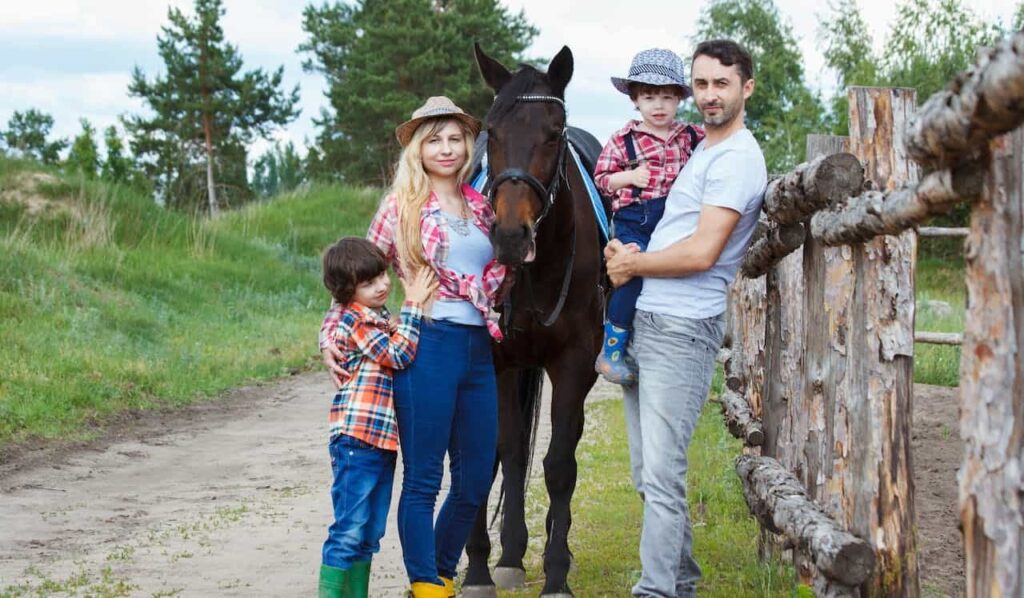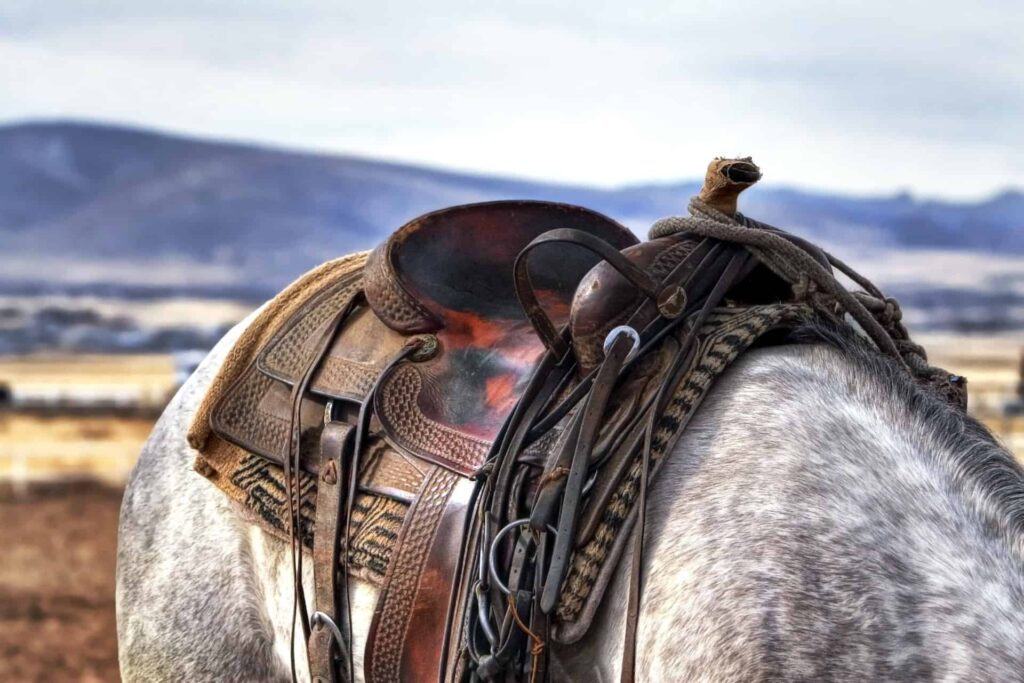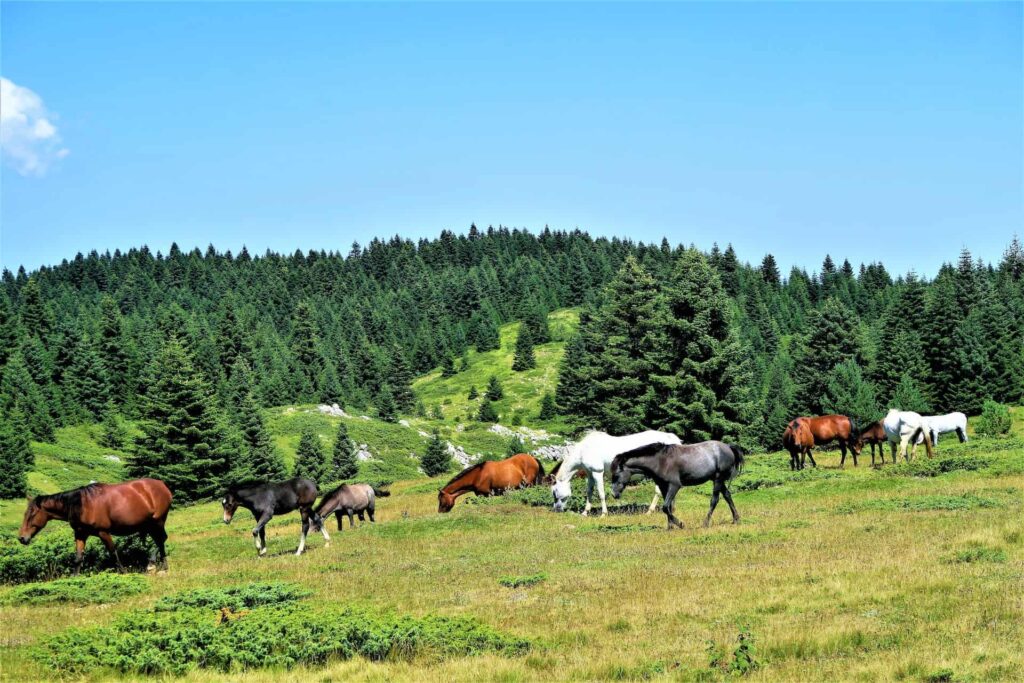Leasing a horse presents an appealing option for individuals who wish to enjoy the benefits of horse ownership without the full commitment that purchasing a horse entails. It offers a unique opportunity for equestrians to develop their riding skills, bond with a horse, and participate in equestrian activities that might otherwise be inaccessible due to the cost and responsibilities of ownership. When you lease a horse, you typically pay a set fee for the period of the lease which grants you specified riding privileges and sometimes sharing responsibilities for the horse’s care.
This arrangement is beneficial for both parties: the leaser gains valuable experience and riding time, while the horse owner can defray some of the costs and ensure their horse stays exercised and cared for, especially if their own time is limited. With various types of leases available, ranging from full to partial or share-lease agreements, potential leasers can find an arrangement that best suits their needs and budget. Careful consideration of the responsibilities, financial and otherwise, should be noted before entering into a lease agreement. It’s important to understand any legal implications such as liability and insurance which should be clearly outlined in the leasing contract.
Key Takeaways
- Leasing a horse provides hands-on equestrian experience with fewer responsibilities than full ownership.
- Financial and care obligations should be reviewed and agreed upon before entering a lease.
- Legal agreements protect all parties involved in the horse leasing arrangement.
Understanding Horse Leasing
Leasing a horse offers riders opportunities to experience horse ownership privileges without a permanent commitment, providing more riding time and a variety of contractual arrangements.
Types of Leases
There are several types of horse leases to consider. A full lease usually grants the lessee full access to the horse, often including the ability to compete in shows. Financial responsibilities like boarding costs, veterinary care, and farrier services are typically expected of the lessee. The half lease and partial lease arrangements offer a shared responsibility between the owner and lessee, often resulting in fewer riding days and divided costs. A free lease can be an arrangement where no lease fee is charged, but the lessee takes on maintenance costs. Care leases focus more on the day-to-day care rather than financial responsibility, while show leases are explicitly for the purpose of competing.
| Lease Type | Riding Time | Financial Responsibility |
|---|---|---|
| Full Lease | Usually unlimited | High |
| Half Lease | Scheduled days | Moderate |
| Partial Lease | Limited | Low |
| Free Lease | Varies | Varies |
| Care Lease | Not applicable | Maintenance-based |
| Show Lease | Event-specific | Competition-related |
Lease Agreements
A lease agreement is a legally binding contract outlining the terms of the lease. Well-crafted lease contracts are essential for clear communication and the protection of all parties involved. These documents should detail all aspects of the lease, such as the lease fee, duration of the lease, insurance requirements, and riding time allocation. It’s critical that both the horse owner and the lessee engage in negotiation to arrive at mutually agreeable terms. Some contracts may include a right-of-first-refusal clause which gives the lessee the option to purchase the horse before the owner offers it to others. Lease agreements must be carefully read, understood, and, ideally, reviewed by a legal professional before signing.
Financial Considerations
When considering leasing a horse, it’s important to be aware of the lease fee along with the associated costs that can affect your budget. Understanding the financial burden of both leasing and owning a horse will guide you to make an informed decision.
Lease Costs
Full Lease: This typically involves a fixed monthly payment that gives the lessee near-complete access to a horse. The cost of leasing can often be similar to the cost of owning a horse, as it generally includes all the expenses associated with the horse’s daily care and maintenance.
- Monthly Lease Fee: Ranges depending on the horse’s training level, breed, and the facilities provided.
- Annual Cost Estimate: Can vary widely by region and stable.
Partial Lease: Offers a more affordable option with limited riding days per week, usually resulting in a lower lease fee.
- Monthly Lease Fee: Less than a full lease; specifics are dependent on the agreement terms.
- Annual Cost Estimate: Economical compared to full leases and outright ownership.
Additional Expenses
Beyond the lease fee, lessees may bear some or all of the following expenses depending on the lease agreement:
- Board: Costs for stalls or fields where the horse is kept—a significant part of the monthly expenses.
- Farrier Costs: Required hoof care, including trimming and shoeing, usually every six to eight weeks.
- Training: Fees for professional training to maintain or improve a horse’s abilities.
- Horse Insurance: Protects against unforeseen veterinary expenses and other liabilities.
- Showing: Entry fees and travel costs for competitions if showing is part of the lease agreement.
- Feeding: The lessee may also be responsible for providing sufficient feed and supplements.
- Grooming and Miscellaneous: Daily care supplies and occasional expenses such as blanket cleaning and repairs.
The financial and time arrangements for a horse lease can vary; review the lease agreement carefully to understand the full scope of expenses involved.
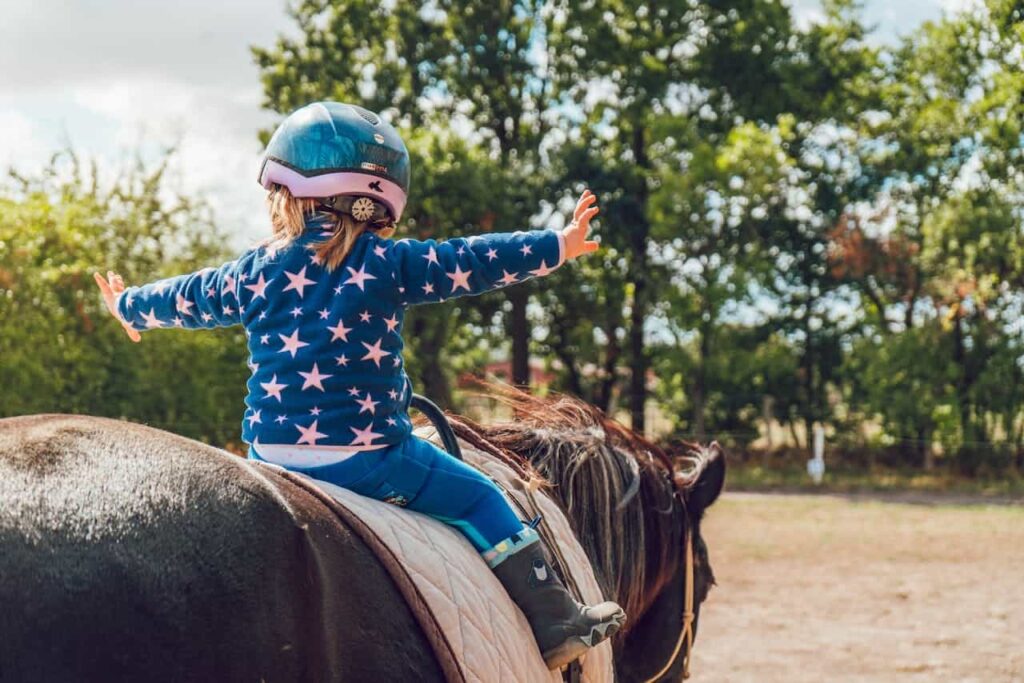
Horse Care and Management
Taking care of a horse involves meticulous attention to their daily needs and ensuring they receive proper training. Lets explore the crucial aspects of routine care as well as the essentials of training and riding, which are key to a horse’s well-being and performance.
Routine Care
Equine routine care is pivotal for a horse’s health and includes several daily and periodic tasks. A horse’s feeding regimen should meet its nutritional needs which can vary based on age, weight, and activity level. Quality hay or pasture makes up the bulk of an equine diet, supplemented with grains or concentrates as necessary. Consistency in feeding times and quantities helps maintain digestive health.
Regular grooming not only keeps the horse’s coat clean but also strengthens the bond between horse and handler and allows for health checks. The grooming process generally includes brushing, mane and tail care, and hoof cleaning. Farrier visits every 6 to 8 weeks, ensure hooves are trimmed and, if needed, shoed to prevent discomfort and hoof-related problems.
Veterinary care, including vaccinations, dental check-ups, parasite control, and routine physical exams, is vital to detect and treat any potential health issues early on. Schedule regular veterinarian visits to maintain the horse’s health and address any issues promptly.
Training and Riding
Training establishes a solid foundation for both horse and rider. Whether for pleasure riding or competition, a structured riding schedule fosters discipline and skill development. An experienced trainer is crucial for novice horses or riders to advance their abilities safely and effectively.
Riding lessons from a qualified instructor are invaluable for riders of all levels. They help refine techniques, teach new skills, and strengthen the rider’s command and control. It is important to maintain a balance in training intensity and rest days to prevent both physical and mental burnout of the equine.
Legal and Insurance Matters
When entering into a horse lease, legal and insurance considerations are paramount to protect both the lessor and the lessee. Ensuring compliance with all lease agreement terms and maintaining appropriate horse insurance are critical to safeguarding financial and legal interests.
Insurance Coverage
In a horse lease scenario, both the lessor and lessee have insurable interests that must be protected. The lessor retains ownership of the horse, while the lessee assumes responsibility for the horse’s care and potential liability. Therefore, comprehensive insurance coverage is important. Commonly, full mortality coverage is secured, reimbursing up to the insured value in cases of death, theft, or authorized humane destruction. The lessee may consider medical or liability insurance to cover any veterinary expenses or accidents that could occur during the lease term.
- Full Mortality Coverage: Protects against the financial loss if the horse dies, is stolen, or requires humane destruction.
- Major Medical Insurance: Helps cover veterinary expenses for illness or injury.
- Liability Insurance: Guards against financial loss if the horse causes injury to people or damage to property.
Contractual Obligations
The lease agreement acts as the legal foundation between the lessor and lessee, outlining each party’s obligations and rights. It should detail the length of the lease, financial responsibilities, insurance requirements, and actions permitted under the lease. A well-documented contract minimizes risk and ensures clarity:
- Duration: Specifies the lease term, including start and end dates.
- Financial Terms: Defines payment schedules, amounts, and responsibilities for expenses like vet care or boarding.
- Insurance Requirements: Clearly states who is responsible for procuring insurance and the types of coverage required.
- Use of the Horse: Outlines the activities allowed with the horse, riding frequency, and care standards.
It’s critical to stipulate that the lessee cannot purchase insurance solely for their benefit since they do not own the horse; however, policies may be obtained that name both parties. Enlisting legal counsel can aid in drafting and reviewing lease contracts to ensure that they are comprehensive and enforceable.
Choosing the Right Horse to Lease
When selecting a horse to lease, it’s critical to understand that the horse’s temperament and age are decisive factors influencing their suitability for a lessee’s needs. Both should align with the rider’s experience level and riding goals.
Assessing Equine Temperament
The temperament of a horse is fundamental to a successful lease experience. It’s advisable for potential lessees to engage in thorough research and to schedule a test ride to gauge the horse’s behavior and compatibility. Horses with a calm and consistent disposition are generally preferred, especially for beginners or those not accustomed to handling a variety of equine moods. This key characteristic dictates how well the horse will respond to the rider and is often informed by past interactions and training provided by the horse owner.
Age and Suitability
A horse’s age is another crucial consideration. Young horses might not be ideal for a rookie rider due to their lack of training and potential unpredictability. Conversely, an older horse with a proven record of reliability may offer a safer and more stable option.
| Age Group | Suitability for Rider Experience Level |
|---|---|
| Young (Under 6) | Experienced riders seeking a challenge |
| Prime (7-14) | Riders of moderate experience up to experts |
| Senior (15+) | Beginners to all levels, depending on health and activity level |
Pairing with the right horse involves matching temperament and age to the rider’s skillset and desired outcomes. Approach leasing with a mindset open to learning and patient enough to find the best fit.
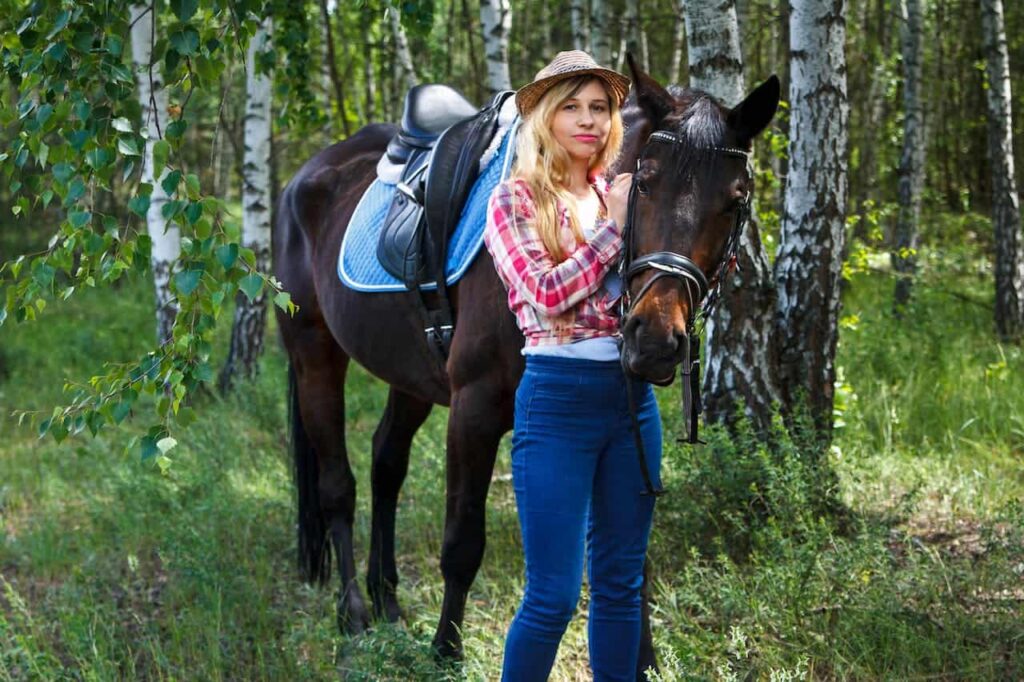
Location and Accessibility
When considering a horse lease, one should not overlook the importance of the location and accessibility of the horse. The location where the horse is boarded influences many factors, including the convenience of travel for the lessee, the environment in which the horse is kept, and the potential for riding opportunities.
- Proximity to Lessee:
- A closer location reduces travel time.
- Ensures frequent visits and bonding with the horse.
- Boarding Facilities:
- Must be properly equipped and maintained.
- Services offered, such as feed and care, vary.
Lessee’s experience and ability levels are also important when considering the location. Facilities offering riding lessons may be preferred by less experienced individuals to improve their skills while having access to the horse.
- Riding Lessons and Training:
- Offered at some boarding locations.
- Can range from basic riding to advanced competition training.
One should assess whether a boarding facility’s location offers suitable riding trails or arenas, depending on the lessee’s interests, whether they are recreational trail riding or specific disciplines such as dressage or show jumping.
Assessing the location and accessibility of the horse in relation to the lessee’s residence, the quality of the boarding facility, and the availability of riding lessons or suitable riding environments is critical for a successful horse lease experience.
Frequently Asked Questions
When entering into a horse leasing agreement, one must be aware of the various aspects that could affect the experience. These frequently asked questions address key issues from the structure of the agreement to understanding the implications of early termination.
What are the typical terms included in a full horse lease agreement?
In a full horse lease agreement, lessees often have exclusive rights to the horse for an agreed period. Terms usually outline the responsibilities for costs like boarding, vet care, farrier services, and define the usage, insurance, and duration of the lease.
What should you consider to determine if you’re ready to lease a horse?
Individuals should evaluate their riding goals, time commitment, financial ability to cover lease-related expenses, and existing riding skills before leasing. Consulting with a trainer can be instrumental in determining if one is ready to lease a horse.
Can leasing a horse be a profitable venture for the owner?
Leasing out a horse can be profitable for the owner, as it may cover costs associated with the horse’s care without the owner relinquishing ownership. Ensuring a compatible match between horse and lessee is crucial to the success of the arrangement.
What are the key questions to ask a stable when looking into a half lease for a horse?
Prospective lessees should inquire about the number of days they are allowed to ride, the sharing arrangement of costs and responsibilities, and what activities are permitted under the half lease. Establishing clear communication lines with the stable to avoid misunderstandings.
How does one typically negotiate the terms of a horse lease agreement?
Negotiating a horse lease agreement usually involves discussing the lease’s duration, usage rights, financial responsibilities, and the lessee’s experience level. Both parties should be forthcoming about their expectations and seek to draft a mutually beneficial agreement.
What are the standard practices for ending a horse lease prematurely?
If a lease must be ended prematurely, standard practice involves adhering to the early termination clauses specified in the lease agreement. This typically includes notice periods, potential penalties, and arrangements for the horse’s return to the owner.
Last Updated on December 9, 2023 by Nate Dewsbury
